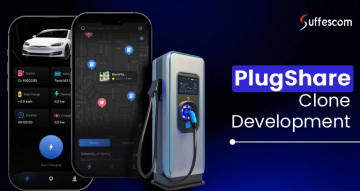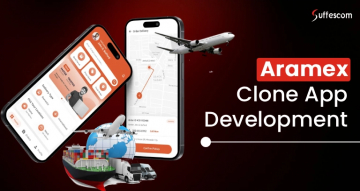Web5 vs Web3 | Web5 Fundamentals Technology & Whitepaper for Web5

While researching Web 5, an impressive presentation depicting web 1, web 2, web 3, and web 5 appeared in one picture. The picture gives a clear understanding of the evolution of all web technologies.
In that illustration, all technologies were arranged in their existing order. The very first, i.e., Web 1, was at the gunpoint of Web 2; Web 2 was at the gunpoint of Web 3; all the 3 web technologies were at the gunpoint of Web 5 from the top. Through this, anyone can see how web 5 is evolving and what the future holds.
There is no doubt that Web 5 is the new norm in this digital world. Web 5 is the invention of Twitter CEO Jack Dorsey. It is stated that Web 5 is not the next version of the web; instead, it is the alternative version of Web 2 and Web 3. Web 3 development solutions, as we all know, is built on the blockchain; however, web 5’ s monetary layer is built on Bitcoin.
Check Out For The Best Web App Development Solutions
Want to explore latest trends on Web applications? We are just one call away. Contact Suffescom experts to get deep insight into Web5 technology.
Jack’s Web 5 is also known as the Symbiotic Web, eligible for communicating with us as we do with each other. This article will cover web 5 fundamentals with complete information and its exclusive components.
Let’s dive in!
Why We Need Web5?
The previous technology Web 3, is blockchain-based technology, expected to be decentralized with no middlemen involved. However, Dorsey in his tweet, exposed that web 3 space is under the control of venture capitalist firm Andreessen Horowitz. Thus, intending to build a highly secured and fully decentralized platform, Dorsey arrived with an alternative version of Web2 and Web 3, i.e., Web 5, built on the Bitcoin blockchain.
Talking about Web 5, it is an extra decentralized blockchain web app development platform with high security and full ownership of data to its users. This emerging technology will aim at decentralizing identity, data storage, and its various applications.
Pillars of Web 5 Technology
Web 5 is based on 3 main pillars- decentralized identifiers, verifiable credentials, and decentralized web nodes.
1. Decentralized Identifiers (DIDs)
Decentralized identifiers are self-proclaimed to provide decentralized identity authentication and routing globally. DIDs are unique identifiers that assist entities or individuals in generating their own identifiers with cryptographic proofs like digital signatures.
A decentralized identifier could be a person, thing, data model, entity, organization, etc. These can be decoupled from centralized registries, identity providers, and certificate authorities. The controller of a DID has the right to control it without requiring permission.
Specifications of DIDs:
- These are self-owned and self-generated
- These are resistant to various interdiction
- No special utility tokens
- No centralized authorities
2. Verifiable Credentials (VCs)
Before understanding verifiable credentials, you must be cleared with credentials.
Credentials in Web5:
The credentials are the proof of individuals’ identity, specific attribute, qualification, or claim. To cite an example: a driver’s license, passport, Social Security Number, or a university degree are proof of your identity, from which a university degree is a claim that you possess that particular education or skill.
After knowing credentials, you might have a better vision of verifiable credentials. These are the cryptographic presentation for verification of your identity and claims. Verifiable credentials exist in the form of data formats and models to represent your identity in the digital world.
Some of the essential features of verifiable credentials are:
- Secure and tamper-proof
- Issued by a competent authority
- Machine verifiable
Let’s have a look at the 3 main entities involved in VCs:
Issuer
An issuer is the one who issues the credentials. This issuer could be anybody from government organizations, banks, healthcare centers, institutes, universities, etc. To issue a credential, these entities use digital signatures and custom schemas.
Holder
The holder is the credential owner and has the power to manage credentials, like with whom credentials should be shared or revoked. As everything is in the hands of the holder, thus, the holder is responsible for creating a verifiable presentation as per the existing standards.
Verifier
A verifier is the one who is responsible for verifying the credentials by taking from the holder. A verifier ensures that the credential is from a reliable issuer, tamper-proof, and is not expired or revoked.
Here are the 3 Basic Components of VCs:
Metadata
Each VC has unique metadata signed cryptographically by the issuer. It represents the information of the issuer, the expiry date and time, a representative image, a public key to use for verification purposes, etc.
Claims
A statement that claims the identity of the individual about a subject. Example: university degree or date of birth certificate.
Proofs
Proofs hold the identity of the individual that others can verify to ensure that the information belongs to you and no data theft has been made.
3. Decentralized Web Nodes (DWNs)
Decentralized web nodes are abbreviated as DWN or DWeb Nodes. These represent the emerging standard for data repository and message relay nodes which act as a basis for decentralized apps and protocols. DWNs enable various entities like organizations, individuals, etc., to transmit or store encrypted or public messages.
Some characteristics of decentralized web nodes are:
- These DWNs are universally addressable.
- Highly secured as data is encrypted with an individual’s DID keys.
- Send and receive messages over an encrypted network
- Supports all identities, including machines, companies, individuals, etc.
Choose Suffescom Solutions As Your Decentralized Web App Solutions Partner
Whether it’s a change in business strategy or the implementation of a decentralized web application, you can always rely on our experts. With years of experience in blockchain our developers and consultants can help you achieve your business goals.
A Drastic Shift from PWA to DWA
PWA (Progressive Web Apps) are the apps that exist majorly today. PWAs are designed to be user-friendly, responsive, progressive, app-like, re-engageable, safe, etc.
However, Jack’s web 5 creation is focused on building DWA (Decentralized Web Apps) infrastructure that would enable developers to develop apps with DIDs and data storage capabilities to give controlling power to users of their personal information. A user will build a unique identity with all his personal information stored, which can be used to sign in for multiple dApps.
Web 5 Technology brings an abundance of rights for users. Let the technology speak for itself in the coming future.
Workflow of Web5
The working of web 5 has been simplified with the example of Tom. Tom has a digital wallet where his identity, data, and authorizations for external apps and connections are safely stored. He uses his wallet to log in to a web5 decentralized app. As he had already connected his decentralized identity to the app; therefore, he didn’t need to create a profile again. In addition to this, he can easily switch apps on web 5 without any threat to his social identity or data.
On the second note, an entity named Jerry is a music lover, but his problem is that he doesn’t want to have his data locked to a single vendor. Due to this issue, he repeats his playlists and songs across different music apps. With the advent of Web5, he can avoid this by keeping all his data in the decentralized web node. The Web5 will give access to his music list to any music app.
Web 5 vs. Web 3
Web 3 is a decentralized network with data spread across nodes, meaning no single entity is the data owner. However, web 5 is even more decentralized and offers a completely decentralized experience to users. This ensures that consumers have full control over their personal data, which is absent in Web 3.
Web 5 is built on the Bitcoin blockchain and tends to provide decentralized identities and data storage. Web 5 offers an amazing user experience and control over user identities. Web 5 platform enables wallets, decentralized web nodes, and decentralized web apps to consumers with the utmost security and privacy.
Web5, being built on Bitcoin, does not require tokens. It has been stated that if the idea of web5 becomes successful, it will make it possible to eliminate the need for cryptocurrency other than Bitcoin. Thus, no more tokens to invest in web 5.
Let’s make the comparison simple in the form of a table:
| Web 3 | Web 5 |
| Smart Contracts | Decentralized Identifiers (DIDs) |
| Smart contracts and transactions are stored in blockchain | In web 5, only DIDs touch the blockchain |
| Assets are owned through NFTs | Data is owned through DID |
| Decentralized Apps (Dapps) | Decentralized Web Applications (DWAs) |
| On-chain and Off-chain Storage Options | Decentralized Web Nodes |
| Native Payments | No Tokens |
The table above gives some glimpses of web 5 vs. web 3. Let’s discuss this in detail.
Blockchain Implementation
Web 3 leverages blockchain platforms like Ethereum, where all the transactions are stored. In web 5, blockchain such as Bitcoin is utilized for anchoring DIDs.
Data/Asset Ownership
In web 3, consumers own digital assets through NFTs (Non-Fungible Tokens). The assets are unique and have only one owner at a time, whereas Web 5 provides data ownership through DID.
Application Deployment
In Web 3, the backend code (smart contracts) runs on a decentralized network that makes the Dapps decentralized that does not require any central entity to run. While in web 5, decentralized web apps are developed and work like PWAs. In DWAs, an SDK web node is added, which makes the apps serverless.
Native Tokens
In Web3, blockchain platforms such as Ethereum have Ether (ETH) as a native token for making transactions. However, web 5 lacks centralized authority, tokens, bottlenecks, etc. It uses a layer 2 DID network for storing DIDs.
Scalability
Web3 experienced the necessity of enhancing the blockchain network’s speed and throughput. Various scaling solutions were implemented to overcome this, such as on-chain scaling, off-chain scaling, plasma chain, or sidechains. On the other hand, Web5 also suffers from scalability issues to which it utilizes ION- a Layer 2 DID network to handle thousands of DID operations.
Get In Touch With Best Web App Development Company
If you want to know more about Web 5, contact with Suffescom Solutions Inc., having experienced web app experts with thorough knowledge of this emerging technology and its fundamentals.
Conclusion
The great achievement of Jack Dorsey related to web 5 has shifted the interests of individuals from PWAs to DWAs. From web 1 to web 3, people experienced a lack of security and decentralization to some extent; however, the arrival of web 5 has made the web fully decentralized with full control over personal data to users. Not only this, it also enables consumers to manage their data and its usage over the Internet. This is the reason why web 5 is termed an emotional web.
Web 5 is not yet completed, and work is still going on to add more functionalities and use cases to bring more security.
If you want to explore more about web 5, we are just one call away. Contact Suffescom experts to get deep insight into Web5 technology.








